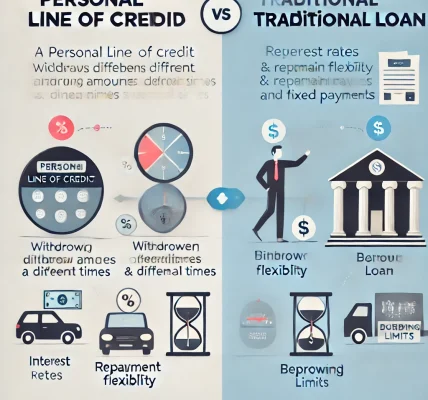Introduction
Debt can become overwhelming, especially when financial hardships make it difficult for borrowers to meet their repayment obligations. Debt restructuring is a financial strategy that allows individuals and businesses to modify the terms of their loans to make repayments more manageable. Whether due to job loss, medical emergencies, or economic downturns, restructuring debt can provide relief and help borrowers regain financial stability.
This blog explores what debt restructuring is, its benefits, the different types, and how borrowers can navigate the process to ease their financial burden.
What is Debt Restructuring?
Debt restructuring is a process in which a borrower negotiates with creditors to alter the terms of their existing loans. This may involve:
- Reducing interest rates
- Extending loan tenure
- Altering repayment schedules
- Waiving penalties and fees
Lenders may agree to restructure loans to help borrowers avoid default while ensuring they recover their funds over time. Debt restructuring is commonly used by individuals, small businesses, and corporations facing financial difficulties.
Types of Debt Restructuring
Debt restructuring can take various forms, depending on the borrower’s situation and the lender’s willingness to negotiate. The most common types include:
1. Loan Modification
- The lender adjusts the loan terms, such as lowering interest rates or extending repayment periods.
- Helps borrowers by reducing monthly payments and improving cash flow.
2. Debt Consolidation
- Multiple loans are combined into a single loan with a lower interest rate and a longer repayment period.
- Makes it easier for borrowers to manage repayments and avoid multiple due dates.
3. Debt Settlement
- Borrowers negotiate with creditors to pay a reduced lump sum rather than the full outstanding debt.
- Suitable for borrowers in severe financial distress, but may impact credit scores.
4. Refinancing Loans
- Borrowers take a new loan to pay off existing debt, usually at a lower interest rate.
- Helps reduce the overall cost of debt and can provide better repayment terms.
5. Moratoriums and Payment Deferrals
- Lenders allow borrowers to pause payments for a specified period, usually during financial hardships.
- Interest may continue to accrue, but it provides temporary relief.
Benefits of Debt Restructuring
Debt restructuring can be a lifeline for borrowers struggling with repayments. Key benefits include:
✅ Lower Monthly Payments: Adjusted loan terms can make repayments more affordable, reducing financial strain. ✅ Avoiding Default and Legal Consequences: Helps borrowers prevent legal action, asset seizure, or foreclosure. ✅ Preserving Credit Score: Timely restructuring can prevent credit score damage due to missed payments. ✅ Reduced Stress and Financial Stability: A well-structured repayment plan can restore peace of mind and long-term financial health. ✅ Flexible Repayment Options: Borrowers can negotiate better terms tailored to their income and financial situation.
Debt Restructuring Process: How to Get Started
If you’re struggling with loan repayments, here’s how to approach debt restructuring effectively:
1. Assess Your Financial Situation
- Calculate total outstanding debt, monthly income, and expenses.
- Identify which loans are causing the most difficulty.
2. Contact Your Lender Early
- Proactively reach out to your bank or financial institution before missing payments.
- Explain your financial hardship and request possible restructuring options.
3. Negotiate New Loan Terms
- Discuss options such as interest rate reduction, longer repayment tenure, or loan consolidation.
- Ensure that new terms align with your financial capacity.
4. Get a Written Agreement
- Any revised loan agreement should be documented in writing to avoid future disputes.
- Review the new terms carefully before signing.
5. Stick to the New Repayment Plan
- Make payments on time to maintain a good relationship with lenders and rebuild financial stability.
Potential Risks and Considerations
While debt restructuring can provide relief, borrowers should be aware of potential drawbacks: ❌ Higher Interest Costs in the Long Run: Extending loan tenure may result in paying more interest over time. ❌ Credit Score Impact: Some restructuring options, like debt settlement, can negatively affect credit ratings. ❌ Fees and Charges: Some lenders charge restructuring fees, which should be factored into the decision. ❌ Not Always Approved: Lenders may reject restructuring requests if they deem the borrower too risky.
Debt Restructuring vs. Bankruptcy: Which is Better?
When borrowers face extreme financial distress, they may consider bankruptcy as an alternative to debt restructuring. However, debt restructuring is often a preferable option because:
| Feature | Debt Restructuring | Bankruptcy |
|---|---|---|
| Impact on Credit Score | Minimal to moderate | Severe, long-lasting impact |
| Loan Repayment | Adjusted terms | Debt discharged but severe consequences |
| Legal Proceedings | Not required | Court involvement necessary |
| Future Borrowing Ability | Still possible | Very difficult for years |
| Cost | Generally low | High legal and filing fees |
Debt restructuring helps borrowers retain control over their financial future without the severe consequences of bankruptcy.
Who Should Consider Debt Restructuring?
Debt restructuring is suitable for: ✅ Individuals struggling with high-interest loans or multiple debt payments. ✅ Small businesses facing temporary financial difficulties but still generating revenue. ✅ Borrowers who want to avoid default, lawsuits, or foreclosure. ✅ Anyone who can commit to a revised repayment plan and improve financial discipline.
Conclusion
Debt restructuring is a practical financial strategy for borrowers who need relief from overwhelming loan payments. By negotiating better loan terms, consolidating debts, or modifying repayment plans, individuals and businesses can regain control of their finances and work toward a debt-free future.




